Total War: Rome II – PC Game Review
Developer: Creative Assembly
Publisher: SEGA
Author: Jim Zabek
Et 2, Roma!
Any time a developer creates a sequel they are faced with a challenge that I call great-more-of-the-same. A sequel presents a major challenge to a successful game. The developer needs to capture the essence of what made the original game great, but needs to offer enough new features and content to make buying the new game worthwhile. Too close of a clone of the original will find gamers sarcastically saying “Great, more of the same :/” On the other hand if a sequel is done well gamers will enthusiastically cry, “Great! More of the same!” Of course, the developer has a third choice, that of making a major departure from the essence of the original game, which case it may not much resemble the original at all.
The Total War series is now venerable. The first game in the series, Shogun, hit store shelves a whopping 13 years ago. Since that time battles have raged across computer landscapes as varied as medieval Europe, ancient Rome, Napoleonic Europe, back to the Sengoku Jidai, and now returning to Rome. That kind of tour-de-force must be respected not only for its breadth but staying power. 13 years is a long haul for any franchise. Given the fickle and demanding expectations of gamers, the ability to consistently and successfully deliver financially successful and critically pleasing titles over that length of time puts Creative Assembly in rarified air.

Diplomacy is better than ever. Here a badly beaten faction offers me a small payment in exchange for peace.
Even more worthy of praise is their ability to create titles set in a historical context which does a decent job of capture historical authenticity. No, the Total War games are not historical simulations. But for AAA titles they manage to bring a lot of history to gamers hard drives and please a lot of historical gamers. Perfect they may not be, but sufficient they are.
When the original Rome: Total War was released it was a significant departure from Shogun and Medieval. A different development team worked on it, and it brought the series fully into the mainstream with a high-quality 3D strategic map, top shelf graphics all the way around, and excellent gameplay. I still remember being haunted by the musical score as I played, and fun as Rome II has been for me, I don’t think its current music lives up to the greatness of the original Rome. A minor quibble, but I do notice such details and wanted to put that marker out there.
So when Rome II hit store shelves there was an instant cry among many gamers that it wasn’t the same game. Did Rome II step beyond the great-more-of-the-same category into that dangerous land of unrecognizably different gameplay?
Many gamers initially seemed to think so. I hesitated only a few days after release before I purchased my copy, and my initial reactions were lukewarm. After playing for ten or so hours a buddy pinged me and asked my opinion. We both agreed Rome II was different. But it was growing on us. He went so far as to say he thought Rome II might qualify for a “masterpiece” – if I recall his exact words correctly.
I have managed to log some 70 hours of game since its release, and while I haven’t completed the full campaign, that was more because of not paying attention to victory conditions than because I hadn’t managed to steamroll most of Europe.
What I will share here are the outstanding impressions I have of the game, rather than a full-blown review. Few readers of Grogheads will be completely unfamiliar with the Total War series, and rather than filling up space discussing painless installation, the merits of using Steam, or the replayability of the game with its dozens of starting nations, I am going to simply list the highlights that stand out to me as someone who has played most of the Total War games since the first Shogun was released.
Calamitas
Most games these days come with several levels of difficulty settings. Almost to a person, everyone in the Grogheads forum I ran across confessed (almost as if it were a mark of shame) that we were all playing on the easiest difficulty setting. Pretty much every one of us had fired the game up on higher difficulty levels and been routed right off the hard drive.
I don’t intend to pass a value judgment on people who play on various difficulty levels. Some guys like banging their heads against the highest difficulty level and then emerge (eventually) triumphant to claim victory. Others seek modest challenge in the middling levels, while others prefer to unwind with the least stress possible. Regardless, everyone I chatted with agreed that there was more than enough challenge to Rome II on the easiest difficulty level. If you haven’t picked up the game yet, beware.
Opus Enim Celeritate
Inside the Grogheads halls Rome II was probably the most highly anticipated AAA title of the year. Outside of our halls, however, debate raged on many websites over the merits of the game. In its quest to balance great-more-of-the-same Rome II departed familiar ground and made significant changes which streamlined both the strategic and the tactical games.
The Total War series has always offered gamers two-games-in-one. A strategic turn-based game where the player slowly builds his economy, military, technology tree, and food infrastructure, and a real-time tactical game where players could directly command troops in battle. With past Total War titles both the strategic and tactical games were meaty. Players were faced with multiple choices for building up each city they conquered, and tactical games could last upwards of thirty minutes to complete, depending on how much maneuvering the player did.
With Rome II both the strategic and tactical games have seen changes which depart from the “classic” gameplay players have come to expect. The choices for upgrading towns are more limited, which speeds up each turn, and the tactical games are often over in five minutes – despite the fact that players have an entire hour on the game clock to accomplish their goals.
For veteran fans of the series at least one of the changes in gameplay have caused consternation, and in some forums flame wars have erupted over the merits of the changes. In less troubled waters (like here at Grogheads) there has been spirited discussion of the changes without the gnashing of teeth, but no less enthusiastic. Personally it took several hours of gameplay for me to accept the changes in the strategic game, though I welcomed the faster tactical games. I was never a huge fan of the tactical games. My greatest enjoyment came from the strategic game, and Rome II has managed to improve them.
By streamlining the strategic game the player can find himself somewhat more constrained in conquering a town in a province. Small towns only have three slots for development. As they grow this can increase, but typically only by one or two more slots. Provinces can have as many as four towns in them. Buildings developed within a province affect the entire province’s stability and welfare. Conquering a town automatically creates a negative 25 point penalty to stability for one turn. Other factors that can also impact stability are the cultural differences (if any), number of soldiers present, and the types of buildings under your control. Types of buildings are especially important because as they are upgraded they can increase instability due to pollution, noise, etc.
When I initially conquer a town (and then the rest of the towns in the province) I typically raze any structures that aren’t compatible with my culture and then start building religious shrines. These have a strong positive impact on provincial stability. The effect of keeping a large standing army in a province dwindles over time, but as with previous Total War games having a large army occupying the land for several turns is generally a good idea.

Here I have captured Treverorum. Note I have a shrine (purple) that will be completed in another turn and will help to pacify the town.
As time goes by – and if the player has created a positive infrastructure to stabilize a province – stability will rise to 100% with lots of happy citizens. At that point the player can consider what he wants to do with the towns in the province. Should he create a bread basket that produces a lot of food for his citizens? Should he invest in mining or wine making or the glass industry to create wealth from trade? Or should he invest in the tools of war and make the area a military hub? Rome II constrains the player more than previous games in this regard, and I found myself having to carefully consider how I wanted to dedicate my provinces.
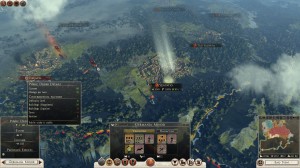
With public order near its maximum and +20 to it each turn, I can consider removing some of the shrines and focusing on something else. Note: the region already has a glass industry, so I can focus on food or military.
More often than not most of them were dedicated to doing something other than war-making. By the time I had taken over most of Europe I found myself with a strong economy that had filled my treasury and kept it overflowing. With an overabundance of food what was often lacking was a center of military production.
The lack of military production, however, wasn’t such a big deal in the end to me. Mercenaries are reasonably plentiful. Creating a small force and then hiring mercenaries helps to enlarge the size. By moving through several provinces I could pick up more mercenaries as I traveled. Within a few turns I found I could typically max out the size of an army (20 units) with ease. Because I prefer to play the strategic game to the tactical, I would often rely on the AI to fight my battles for me. In general a human can achieve better results than the auto-resolution of the game. However, for my play style that is acceptable. Generally speaking bringing two, or even three, armies to besiege a town resulted in success. The excess casualties took a couple of turns to replenish, but I am OK with that since I’m playing the game for strategic enjoyment.
Consilium Populo
My first big campaign is nearing completion and my faction was the Suebi, a Germanic tribe from northern Europe. They bring their own bonuses, but they suffer from two disadvantages. First, and perhaps most importantly, they melt like snowmen in the deserts of North Africa. Attrition for a standing army outside of friendly territory is not to be taken lightly. I have seen an army fall from full-strength to nearly 50% in two turns. The good news is that (the game tells us) desert folk suffer equally dismal results heading into our colder lands. Nevertheless the player should take great care when he moves a people of one area into the extreme climate of another. The game does not treat them well.
The second thing I noticed is that the Suebi don’t seem to enjoy much in the way of sophisticated naval units. This could be due to my lack of interest in creating much of a navy, but in my reading through the Grogheads thread, lots of players who had Mediterranean navies enjoyed biremes and triremes. My Suebi didn’t seem to be able to create those. Which was fine. I was far more comfortable fighting on land anyway.
Ars Tactica
Although the tactical games are probably my least favorite aspect of the Total War series I think a brief discussion of the changes to the game is worth having. The most noticeable difference between Rome II and other games in the series is that the tactical games are over much faster. Units march faster, combat is resolved faster. But I’m not sure I think these are bad things. I think there’s one other piece that is often overlooked in a discussion of the tactical games and that is the predicted versus actual outcome. It is well-known to fans of the series that they player can always outsmart the AI in the tactical games. What’s different now is the inability to create a major upset.
In past Total War games I learned that if I had a smaller force that the auto-resolve predicted I would lose, if I took the time to prepare a position and played wisely, I could usually end up scraping by with a win. It might be a pyrrhic victory, but I could usually win nonetheless. With Rome II that seems to have changed. If the auto-resolve predicted that I would lose a battle, I found I would lose no matter what. Only in very close battles where the numbers were nearly evenly matched did I have a chance of winning. Gone are the days of me taking command of an army facing certain doom and through brilliant tactics crushing a much larger force. So if you’re the player who relished the tactical games for your ability to snatch victory from the jaws of certain defeat – then you may have an unwelcome surprise awaiting you with Rome II.
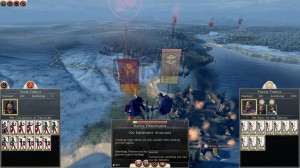
Attacking now will result in disaster for me, regardless of whether I command the battle personally. My best option is to hold the siege, bring up more troops, and hope they don’t sally forth to fight.
On balance, I think the changes to the tactical game makes it more realistic in the sense that if you’re outnumbered 2:1 you’re probably going to lose. That didn’t mean your efforts were wasted. Yes, you might see your forces crushed and driven from the field, but when I personally took charge of the battle, the enemy army was often left a shell of itself. Playing personally still vastly improves the outcome over letting the AI resolve a battle, but it typically will not allow you to personally overturn a lopsided engagement. It will allow a small force to severely blunt the edge of a large hostile force, allowing for much easier follow up battles (if you have the forces available). But you won’t see a large number of upsets by manually controlling your troops. In my view, that’s a positive development.
Ave Roma!
If you’re still on the fence with Rome II the decision to buy it shouldn’t be difficult. There is more than enough of the Total War gene pool in it to be enjoyable to anyone who loved the previous games. Unless you derive the majority of your pleasure playing the tactical games I don’t see a reason not to buy Rome II. The tactical games have drawn criticism from some players. If your play style in previous Total War games relied on deft management of the tactical battles to win your battles when the AI could not, then you may not love what Rome II has in store.
Rome II is not the original Rome, either. It’s not a repackaged Rome updated for a modern OS. It’s a new game. It’s a different game. And it’s a great game. Rome II is different enough from the original to stand on its own and close enough to its roots to still be a welcome addition to the Total War family. Ave Roma!


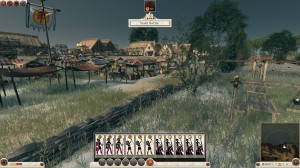
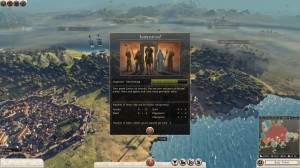

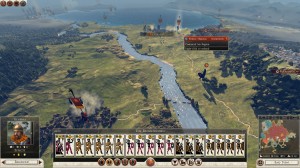

Thanks for the insightful review Jim! I will almost certainly have Rome 2 on my Christmas wish list.
[…] reared its head again as some readers thought Total War Rome II should have been in the RTS category instead of the Digital Turn-Based Strategy category, which it […]